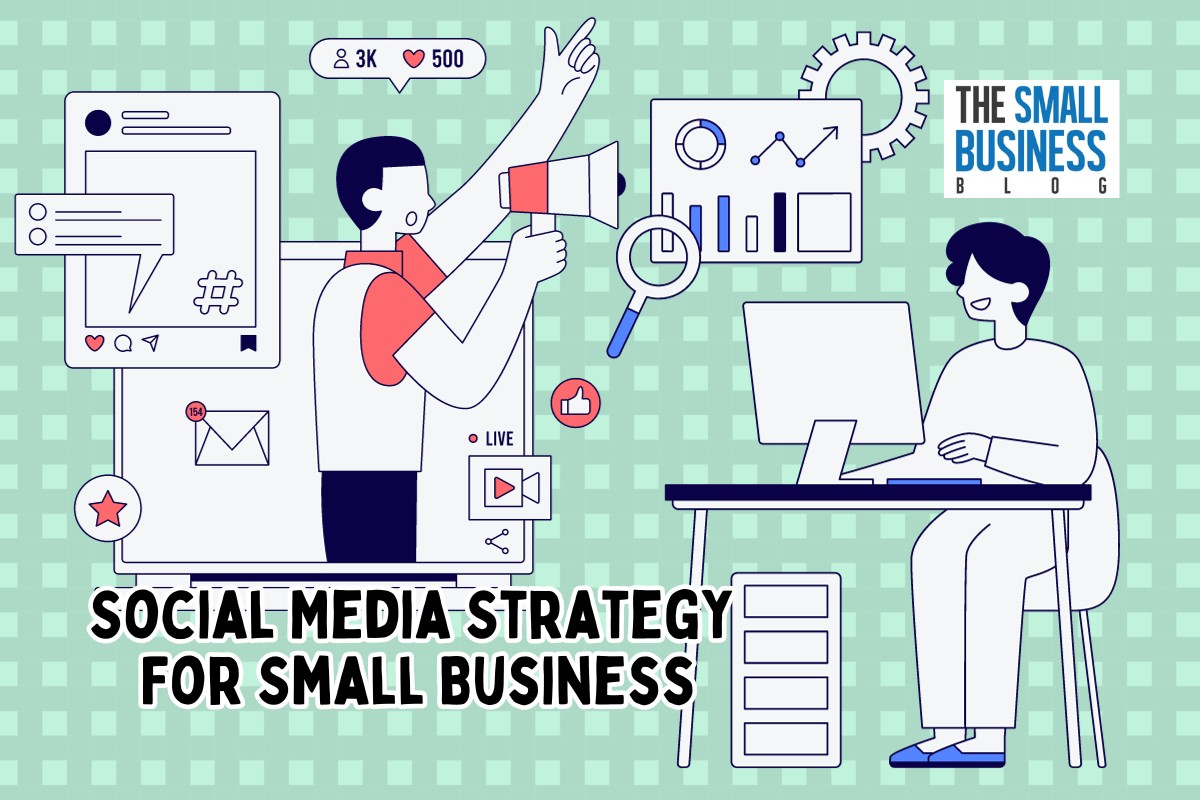A successful social media marketing strategy for small businesses requires a strategic and thoughtful approach.
In contrast to larger enterprises with dedicated resources and ample time, small businesses must adopt a more agile, elegant, and creative mindset.
Small businesses cannot simply rely on throwing financial resources at challenges and hoping for optimal results.
Instead, they need to approach social media marketing with intelligence, ensuring every effort is purposeful in reaching their target audience.
This guide will walk you through the essential steps to develop an effective social media strategy for small businesses to outshine even some industry giants.
Post Contents
- 1 How to Create a Social Media Strategy For Small Business
- 2 Why is Social Media Important for Small Businesses?
- 3 Top Small Business Social Media Tools
- 4 Frequently Asked Questions
- 5 Conclusion
How to Create a Social Media Strategy For Small Business
Here are the steps to create an excellent social media strategy.
1. Setting Clear Goals
For small businesses, establishing concrete objectives is not just a formality; it’s the roadmap guiding every step online.
SMART goals aren’t just trendy acronyms but the backbone of a purpose-driven strategy.
Specificity ensures everyone is on the same page; measurability enables tracking progress.
Achievability sets realistic expectations, relevance aligns with overall objectives, and time-bound constraints create a sense of urgency.
Defining objectives goes beyond the allure of vanity metrics.
It’s not just about accumulating likes or followers; it’s about substantial outcomes like increasing brand awareness, driving website traffic, or boosting sales.
Each goal should be a building block in the grand design of your business success.
2. Specify Your Audience

In the intricate dance of digital marketing, small businesses must embark on a journey of discovery, getting to know the heartbeat of their audience.
It goes beyond mere recognition; it’s about building a profound understanding of the people crucial to your business’s success.
Thorough Demographic Research
Small businesses should don their investigative hats and dive deep into demographic research.
It’s not just about knowing the age or location of your audience; it’s about understanding their aspirations, challenges, and what indeed resonates with them.
Mapping Preferences
Preferences are the compass guiding your content.
Investigate the content your audience engages with—do they prefer bite-sized videos, insightful articles, or interactive polls? This knowledge is gold when crafting captivating content.
Decoding Behaviors
How does your audience navigate the vast landscape of social media?
What are their interaction patterns?
Unraveling these behaviors equips you to tailor content strategies that seamlessly integrate with their digital journeys.
3. Choosing the Right Social Media Platforms
Social media is a vast landscape; not all territories are equally fertile for every business.
Assess the relevance of each platform to your specific industry and audience.

A visually-driven platform, Instagram serves as an ideal space for showcasing your products or services in action.
It’s not just a place for mere visibility; it’s a community-building hub where enthusiasts gather to celebrate your brand.
With many e-commerce features, converting followers into customers has never been easier.
The platform’s extensive network of social media influencers provides opportunities for impactful collaborations, reaching relevant audiences and potential customers.
Additionally, Instagram is a goldmine for sourcing organic user-generated content (UGC) about your offerings, offering a valuable third-party recommendation for your brand.

As the most widely-used social media site, Facebook is an all-encompassing platform suitable for various content types.
From sharing photos and company updates to videos and informative content, Facebook is a versatile space for building brand awareness and trust.
Like Instagram, Facebook boasts sophisticated e-commerce features and advanced targeted advertising tools.
Its suite of community forum features, including Facebook Groups, Messenger Rooms, and Live Events, sets it apart.
Moreover, Facebook’s robust analytic tools contribute to a deeper understanding of your followers, aiding in achieving SMART goals.
Twitter / X

Twitter, which has rebranded to X under Elon Musk, is renowned for its short messages and shareable media.
It is the go-to platform for quick updates, articles, and customer support.
Its real-time nature makes it perfect for companies with frequent news updates and resources to share.
A prime example is Innocent Drinks, which utilizes X for customer communication and question-answering. The platform’s concise format facilitates quick and direct connections.
TikTok

Contrary to popular belief, TikTok isn’t just for teenagers.
It’s a video-driven platform with informative, entertaining, and creative content.
Businesses leverage TikTok to showcase product functionality, share behind-the-scenes glimpses, provide tips, and participate in trending challenges.
Lucume, for instance, uses TikTok to promote its clay earrings collection.
While initially appealing to Gen Z, TikTok’s demographic is evolving, with more millennials joining the platform.
The dynamic nature of TikTok allows businesses to engage with a diverse and expanding audience.
YouTube

Unlike most social platforms, YouTube allows longer-form videos, perfect for in-depth, educational content.
YouTube is the destination for styling tips, interviews, tutorials, and transformations.
Later, for example, utilizes YouTube to share various social media tips, strategies, how-to videos, courses, and conference sessions.
It’s a platform that facilitates comprehensive storytelling and knowledge sharing.
These were the big five, but there are many others like Pinterest and LinkedIn for small businesses; again, it depends on your objectives.
4. Make Compelling Content

Content, at its core, is a storyteller.
Small businesses should focus on weaving narratives that add value to the audience’s lives.
The content should be a gift, not just a message, whether through insightful blog posts, visually captivating images, or emotionally engaging videos.
The heartbeat of compelling content is authenticity.
It’s about speaking the language of your audience, understanding their pain points, and offering solutions.
Authentic content builds trust, transforming your audience from passive consumers to active brand advocates.
Aligning content with the brand’s voice is paramount.
Consistency creates a brand identity that is recognizable and relatable.
Maintaining a consistent voice builds a connection that transcends individual pieces of content, whether it’s a witty tone, a professional demeanor, or a touch of humor.
The Role of Visuals in Social Media
- Visual Speed and Impact – Small businesses should invest in visuals that not only stop the scroll but also linger in the minds of their audience.
- Eye-Catching Images and Videos -Images that tell stories, videos that evoke emotions – these are the tools that transform your content from a passing glance to a lasting memory.
- Consistent Aesthetic – From color schemes to image styles, maintaining a consistent aesthetic creates a cohesive visual identity.
5. Engaging with Your Audience
Engaging with your audience goes beyond just responding to comments and messages.
It’s about building a genuine connection with your followers and fostering community around your brand.
Responding promptly to inquiries and comments is essential, but authentic engagement involves actively seeking opportunities to interact.
One effective way to engage is by running polls, asking questions, and encouraging discussions.
It invites participation and shows your audience that their opinions matter.
Additionally, sharing user-generated content and showcasing customer testimonials humanizes your brand, making it more relatable.
Engaging with your audience is not a one-way street.
Actively listen to their feedback, learn from their interactions, and incorporate their insights into your content strategy.
This two-way communication builds trust and loyalty, turning followers into brand advocates.
6. Analyzing Results and Adjusting with Trends

Analyzing the results of your social media efforts is a fundamental step toward improvement.
Regularly review key performance indicators (KPIs) such as engagement, click-through, and conversion rates.
Dive into social media analytics to understand which content resonates the most with your audience.
Data-driven decision-making is crucial in adjusting your social media strategy.
Identify patterns and trends in audience behavior and adapt your approach accordingly.
If certain types of content consistently perform well, consider producing more of that content.
Conversely, if you notice a decline in engagement, explore new approaches and content formats.
Staying updated with trends in the social media landscape is equally important.
Platforms frequently introduce new features, and user preferences evolve.
Embrace recent trends, experiment with innovative content formats, and remain agile in adapting to changes online.
Why is Social Media Important for Small Businesses?

Social media is the great equalizer for small businesses in an era dominated by digital connectivity.
It provides a cost-effective and efficient means to compete with larger counterparts on a global scale.
Here’s why it’s indispensable:
1. Global Reach, Local Impact
Social media platforms break down geographical barriers, allowing small businesses to extend their reach beyond their physical location.
Whether a local coffee shop or an artisanal craft store, social media enables you to connect with a global audience while maintaining the personal touch that defines small businesses.
2. Building Brand Awareness on a Budget
For small enterprises operating on limited marketing budgets, social media offers an unparalleled opportunity to build brand awareness.
Through strategic content creation and targeted campaigns, businesses can elevate their visibility without the hefty price tag associated with traditional advertising.
3. Fostering Direct Customer Engagement
Unlike traditional marketing channels, social media provides a direct line of communication between businesses and their customers.
This real-time engagement fosters a sense of community and loyalty.
Small businesses can leverage this interaction to gain valuable insights, address customer concerns promptly, and tailor their offerings to meet the specific needs of their audience.
4. Driving Website Traffic and Conversions
A well-crafted social media strategy acts as a traffic driver to a business’s website.
Small businesses can increase website traffic by strategically placing links and enticing content on social platforms.
Moreover, with compelling calls to action, social media becomes a powerful tool for converting visitors into customers, driving sales and revenue.
5. Leveling the Playing Field
Social media provides a level playing field for businesses of all sizes.
Small enterprises can showcase their unique selling propositions, tell their brand stories, and compete with industry giants.
The emphasis shifts from who has the most significant marketing budget to who can create the most engaging and relevant content.
6. Real-Time Market Feedback
Understanding market trends and customer preferences is critical for business success.
Social media facilitates real-time feedback, allowing small businesses to adapt quickly to changing market dynamics.
Whether through comments, likes, or shares, every interaction provides valuable data that can inform product development, marketing strategies, and overall business direction.
Top Small Business Social Media Tools
Small businesses can level the playing field and maximize their impact with the proper tools.
Here are some to help you out:
1. Google Analytics
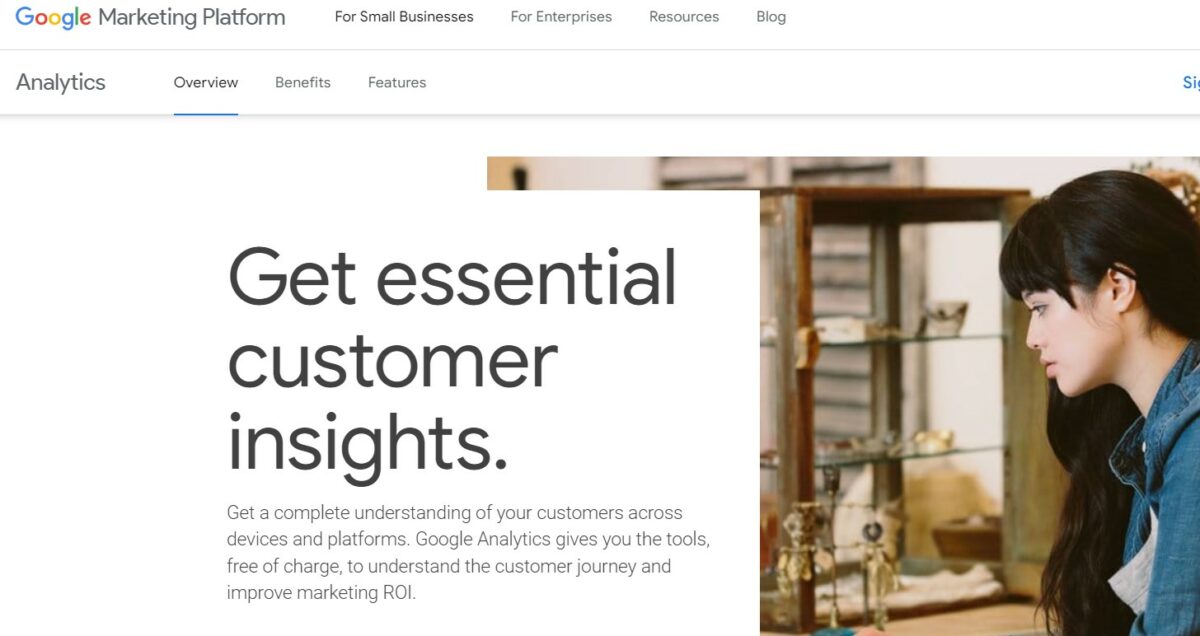
While not exclusively a social media tool, Google Analytics is indispensable for understanding how social media traffic contributes to your website’s performance.
Small businesses can track referral traffic from social platforms, measure conversions, and refine their online strategy accordingly.
2. Canva
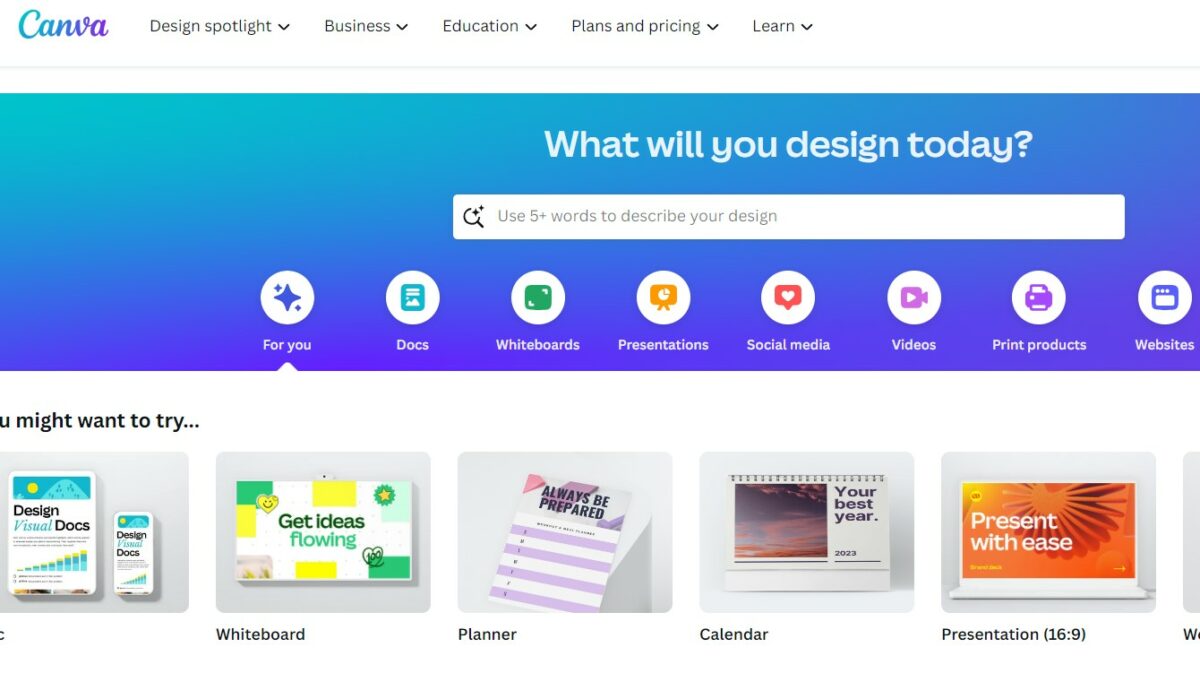
For small businesses aiming to create eye-catching visual content without needing a graphic designer, Canva is a game-changer.
This user-friendly design tool offers customizable templates for social media posts, ensuring a professional and cohesive brand image across platforms.
3. Buffer
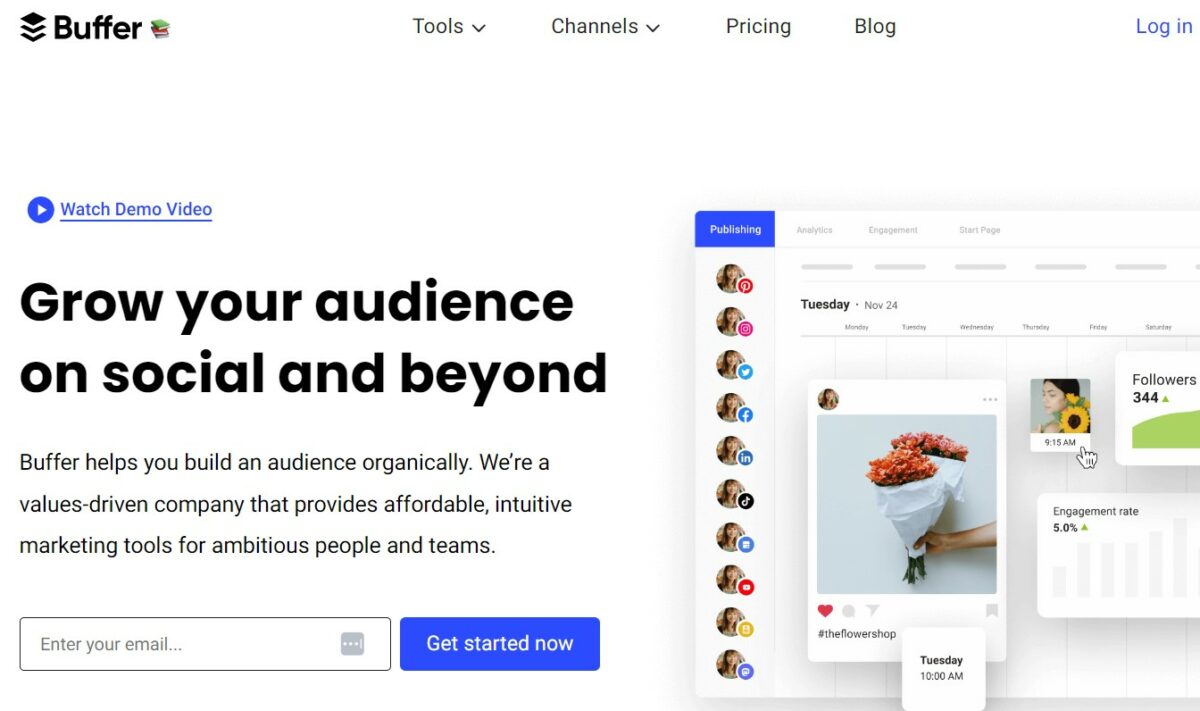
Buffer simplifies social media scheduling, making it easy for small businesses to plan and post content at optimal times.
It also provides analytics to track the performance of your posts, helping refine your strategy based on data-driven insights.
4. Mention
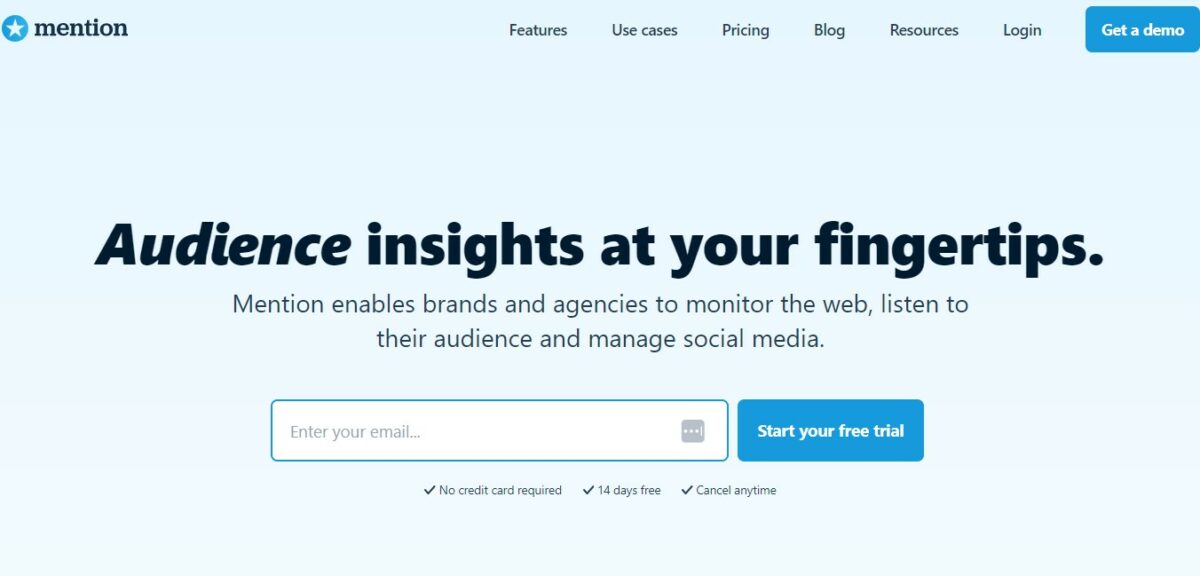
Monitoring your brand’s online presence is crucial, and Mention excels in this aspect.
This tool tracks brand mentions across various platforms, allowing small businesses to engage with their audience, address concerns, and stay on top of their online reputation.
Frequently Asked Questions
Should I invest in paid advertising on social media for my small business?
Paid advertising can be beneficial, especially for boosting visibility.
But, targeting the right audience and monitoring the return on investment is essential.
How do I measure the success of my social media strategy?
Track key performance indicators (KPIs) such as engagement, click-through, and conversion rates.
Celebrate milestones and continuously refine your strategy based on data.
Should I hire a social media manager for my small business or manage it myself?
The decision depends on your resources and expertise.
Having a dedicated social media manager can ensure a focused and strategic approach.
However, with the steps in this article, you can do it independently because many other small businesses successfully manage social media in-house.
Conclusion
A robust social media strategy for small business is a multifaceted endeavor.
It’s not just about posting content; it’s about crafting a narrative, building connections, and adapting to the ever-changing digital landscape.
Our approach is comprehensive, meticulous, and driven by results.
Armed with these insights, small businesses can confidently navigate the social media space, knowing that a well-executed strategy can lead to increased brand visibility, customer loyalty, and business growth.







